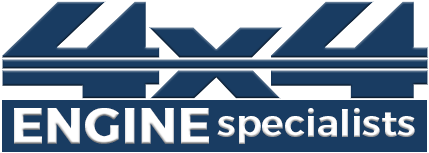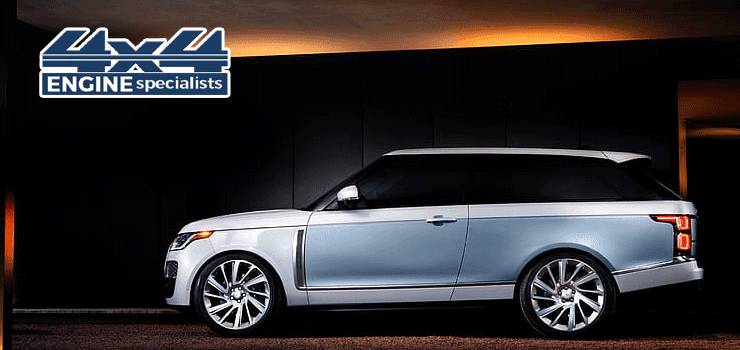When considering the purchase of a used Range Rover 2.0 engine, it’s crucial to verify its quality to ensure reliability and performance. Understanding the key factors to look for can save you time and money while providing peace of mind. We explores the essential steps in assessing a used Range Rover 2.0 engine’s condition, including visual inspections, history checks, and professional evaluations. Additionally, we’ll discuss the benefits of engine replacement and the advantages of opting for reconditioned engines, including supply and fit services.
Visual Inspection
A thorough visual inspection is the first step in verifying the quality of a used Range Rover 2.0 engine. Look for any signs of damage, corrosion, or wear and tear. Check for oil leaks, as they can indicate underlying issues such as worn seals or gaskets. Inspect the engine block and cylinder head for cracks or warping, which could compromise the engine’s structural integrity. Pay attention to the condition of the belts, hoses, and wiring, as these components can give clues about how well the engine has been maintained.
Additionally, examine the oil and coolant levels and their condition. Dirty oil or coolant can signal neglect or potential internal problems. Look for any unusual smells or discoloration, which might indicate contamination. Performing a visual inspection can help you identify obvious red flags and determine if further evaluation is necessary.
Engine History and Documentation
Reviewing the engine’s history and documentation is vital in verifying its quality. Request maintenance records, service history, and any previous repair documentation. These records can provide insights into how well the engine has been cared for and if it has undergone any significant repairs or replacements. Consistent maintenance and timely repairs often indicate a well-maintained engine.
Additionally, check the engine’s mileage. Lower mileage generally suggests less wear and tear, but it’s essential to consider how the vehicle was used. Highway miles are less taxing on an engine compared to city driving. Verify if the engine has been involved in any accidents or has undergone major overhauls. A transparent history can help you make an informed decision about the engine’s quality and reliability.
Compression Test
A compression test is a crucial diagnostic tool for assessing the health of a used Range Rover 2.0 engine. This test measures the pressure in the engine’s cylinders, indicating the condition of the pistons, rings, and valves. Low compression in one or more cylinders can signal significant internal problems, such as worn piston rings or leaking valves.
Performing a compression test involves removing the spark plugs and using a compression gauge to measure the pressure in each cylinder. Compare the readings to the manufacturer’s specifications. Consistent and within-specification readings across all cylinders indicate a healthy engine. Significant variations or low compression readings necessitate further investigation and may be a sign to avoid the engine.
Professional Mechanical Inspection
Engaging a professional mechanic for a detailed inspection is a crucial step in verifying a used engine’s quality. A trained mechanic can perform various diagnostic tests, including a compression test, leak-down test, and computer diagnostics. They can also inspect the engine’s internal components, such as the timing chain or belt, camshaft, and crankshaft, for wear and damage.
A professional inspection provides an expert opinion on the engine’s condition and potential future issues. The mechanic can identify problems that might not be evident during a visual inspection or history check. Investing in a professional inspection can save you from costly repairs down the road and ensure you are purchasing a high-quality used engine.
Engine Replacement Options
When considering the purchase of a used Range Rover Engine, it’s worth exploring engine replacement options. Sometimes, replacing the engine might be more cost-effective and reliable than repairing or rebuilding an existing one. Engine replacement involves installing a new or reconditioned engine into your vehicle, which can enhance performance and extend the vehicle’s lifespan.
Reconditioned engines are a popular choice for replacements. These engines have undergone a thorough refurbishment process, including cleaning, machining, and replacing worn components. Opting for a reconditioned engine ensures you are getting a unit that meets or exceeds factory specifications, providing peace of mind and reliability.
Benefits of Reconditioned Engines
Reconditioned engines offer several benefits, making them an excellent option for those seeking a quality replacement. Firstly, they undergo a rigorous reconditioning process, including disassembly, cleaning, inspection, and replacement of worn or damaged parts. This ensures the engine performs like new, meeting manufacturer specifications.
Secondly, reconditioned engines are often more cost-effective than brand-new ones, providing significant savings without compromising quality. They also come with warranties, offering protection against potential issues. Additionally, opting for a reconditioned engine is an environmentally friendly choice, as it reduces waste and promotes recycling of engine components.
Supply and Fit Services
Choosing supply and fit services for your used Range Rover 2.0 engine replacement can simplify the process and ensure a seamless installation. These services provide both the engine and the installation, performed by experienced technicians. This eliminates the need to find a separate mechanic, reducing the risk of errors and ensuring the engine is installed correctly.
Supply and fit services often include warranties, covering both the engine and the installation. This provides peace of mind, knowing that any issues arising from the engine or installation will be addressed. Additionally, these services can save you time and effort, as they handle all aspects of the replacement process, from sourcing the engine to fitting it into your vehicle.
Conclusion
Verifying the quality of a used Range Rover 2.0 engine involves several critical steps, including visual inspections, history checks, compression tests, and professional mechanical evaluations. Exploring engine replacement options and understanding the benefits of reconditioned engines can provide reliable and cost-effective solutions. Opting for supply and fit services ensures a seamless and hassle-free installation process. By following these guidelines, you can make an informed decision and ensure the longevity and performance of your Range Rover 2.0 engine.


